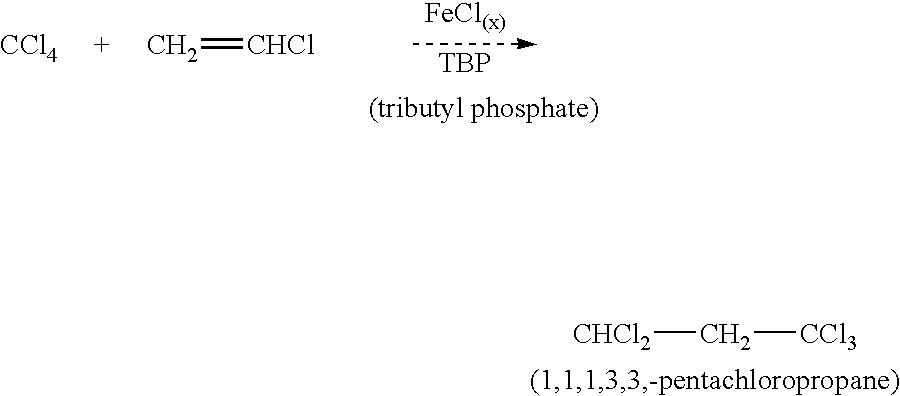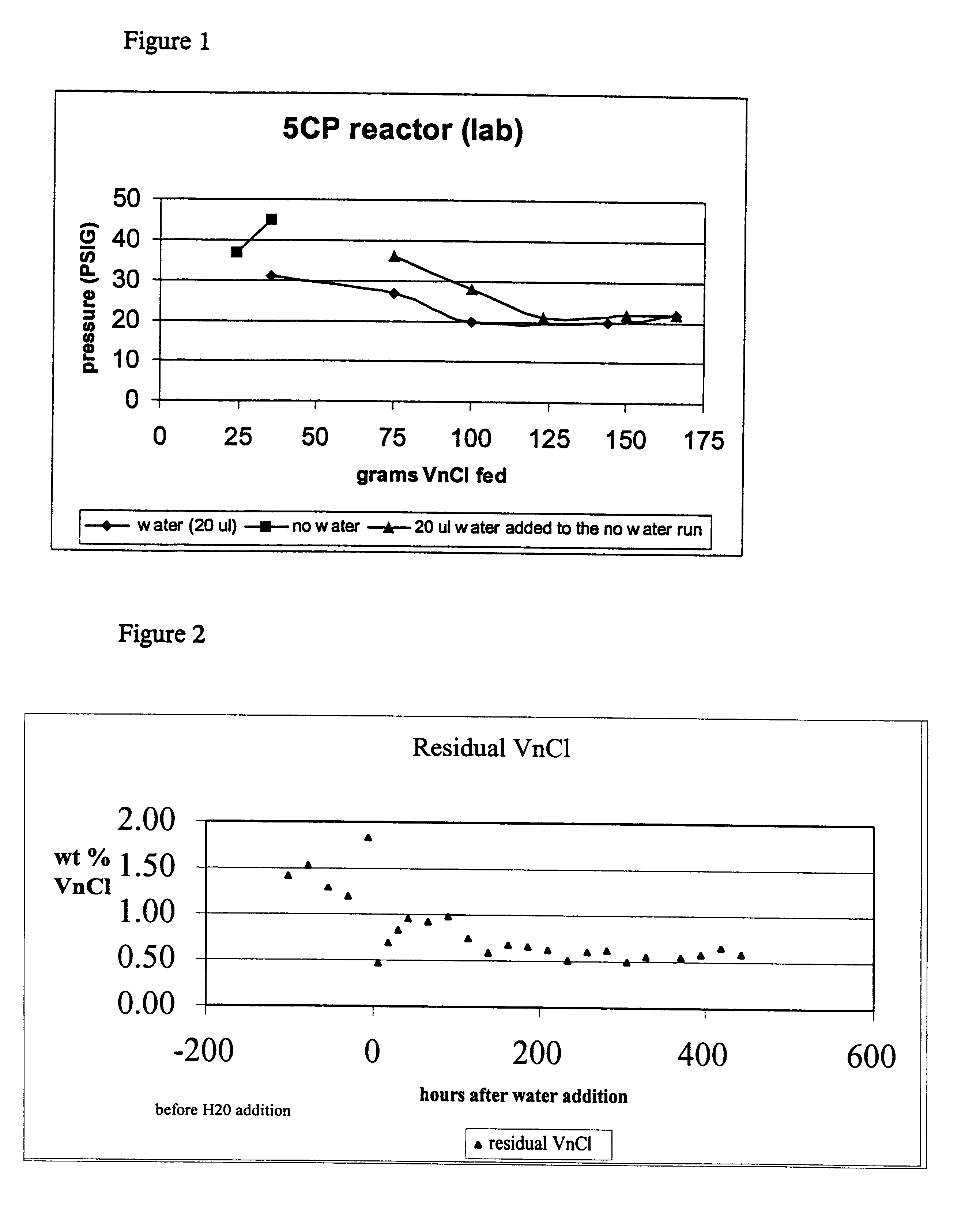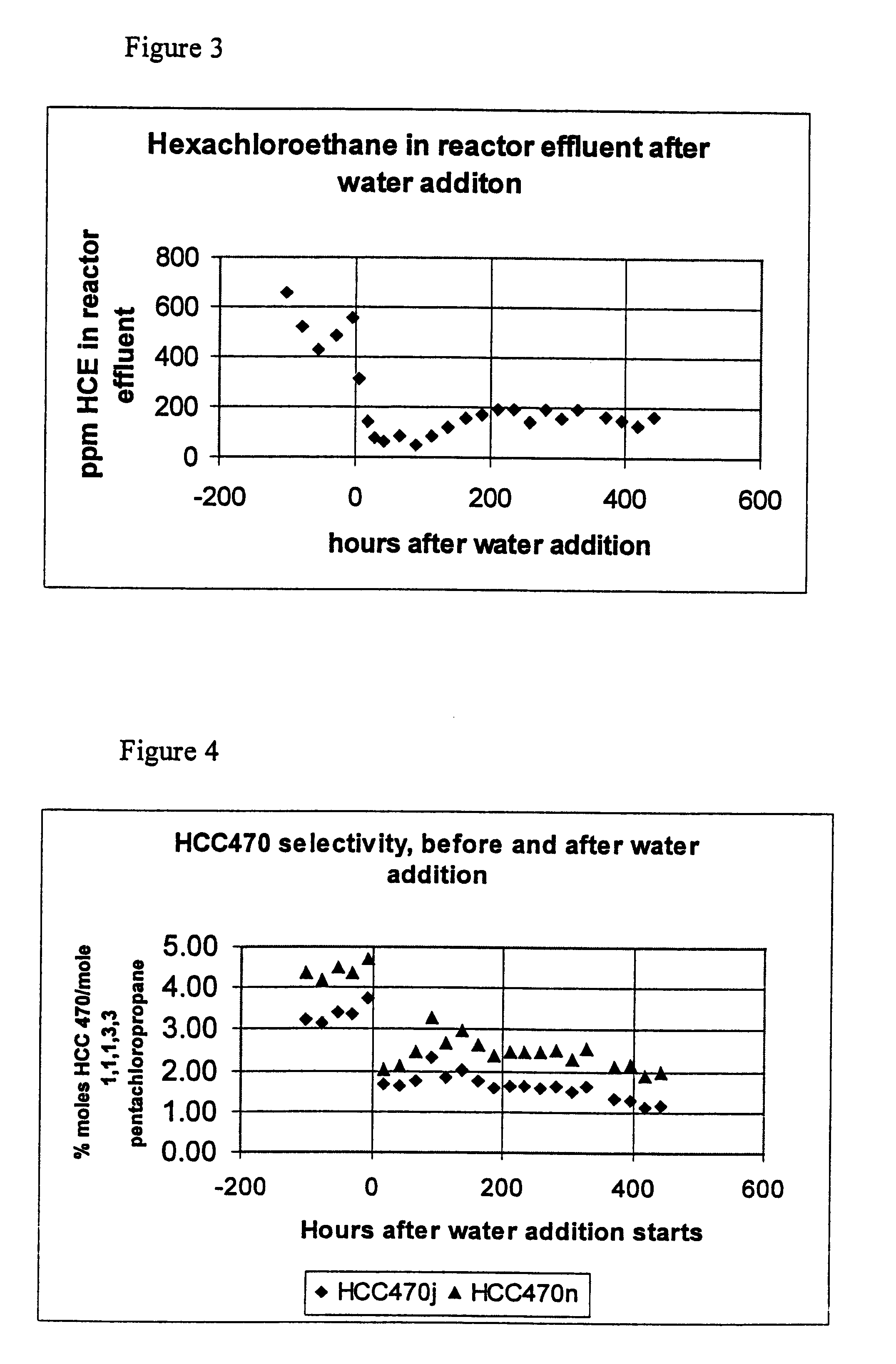Water-enhanced production of 1,1,1,3,3,-pentachloropropane
a technology of pentachloropropane and hydrochloroethylene, which is applied in the field of water-enhanced production of 1,1,1,3,3,-pentachloropropane, to achieve the effect of enhancing the production of any hydrochlorocarbon feedstock
- Summary
- Abstract
- Description
- Claims
- Application Information
AI Technical Summary
Benefits of technology
Problems solved by technology
Method used
Image
Examples
example 2
Baseline Runs, No Water Addition
The initial shake down runs were conducted with the following materials charged to or being fed to the reactor during the run.
The CCl.sub.4, TBP, FeCl.sub.3, and Fe were added to the reactor, which was stirred at 250 RPM. After the temperature reached approximately 60.degree. C., 10 grams of vinyl chloride were added to prevent unwanted side reactions as the solution approached operating temperature (104.degree. C.). The remaining vinyl chloride was metered into the solution at approximately 1 gram / minute until the total weight desired for the experimental run had been added. The initial runs had to be stopped several times due to excessive pressure in the reactor and the run was terminated without being able to feed the desired amount of vinyl chloride. The rupture disk was set at 50 psig and the vinyl chloride addition was stopped when the pressure reached 45 psig. The next few runs were modified to try to increase the reaction rate and thus decreas...
example 3
Addition of Water
A run was completed with the addition of 20 micro-liters of water using the same feed material concentrations as a previous run, which had to be terminated due to excessive pressure:
During this run, as the reaction temperature approached 104.degree. C., there was a large exothermic reaction where the temperature increased 10-20.degree. C. This was very surprising because the amount of water added was only an increase of 23-ppm in the system. In all the previous runs, no exothermic reaction was noted. This addition of a small amount of water also allowed this run to go to completion without exceeding the pressure limitations of the glass reactor.
example 4
Addition of Water
Example 3 was repeated using 10 micro-liters of water instead of 20 micro-liters with the same results. There was an exothermic reaction and the vinyl chloride was fed to the system at the desired rate and concentration without exceeding the pressure limitations of the glass reactor. Several attempts were made to control the exothermic reaction. Modification in the operating procedure included heating the mixture to 60.degree. C. (versus 100.degree. C.) and adding 10 grams of vinyl chloride, addition of 1,1,1,3,3-pentachloropropane to allow dilution of the reactants, and slower heating of the reactant mixture. The addition of 220 grams 1,1,1,3,3 -pentachloropropane as a diluent was the most helpful in controlling the exothermic reaction.
PUM
| Property | Measurement | Unit |
|---|---|---|
| Fraction | aaaaa | aaaaa |
| Fraction | aaaaa | aaaaa |
| Weight | aaaaa | aaaaa |
Abstract
Description
Claims
Application Information
 Login to View More
Login to View More - R&D
- Intellectual Property
- Life Sciences
- Materials
- Tech Scout
- Unparalleled Data Quality
- Higher Quality Content
- 60% Fewer Hallucinations
Browse by: Latest US Patents, China's latest patents, Technical Efficacy Thesaurus, Application Domain, Technology Topic, Popular Technical Reports.
© 2025 PatSnap. All rights reserved.Legal|Privacy policy|Modern Slavery Act Transparency Statement|Sitemap|About US| Contact US: help@patsnap.com



